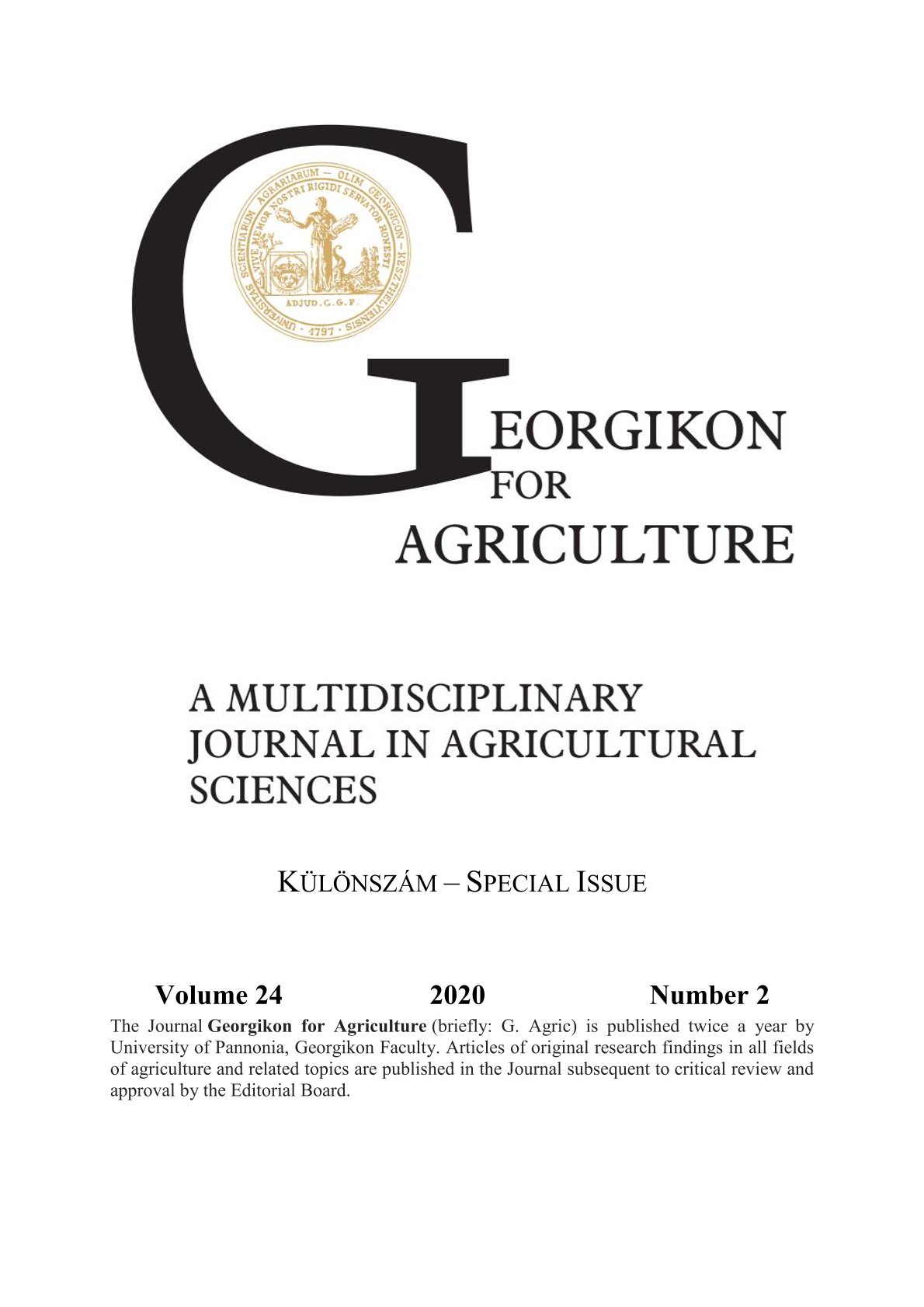Egy növénykondicionáló készítmény hatásának vizsgálata kisparcellás szántóföldi kísérletekben
Kulcsszavak:
növénykondicionáló, kérdőíves felmérés, szója, árpa, szántóföldi kísérletAbsztrakt
Az emberiség számára nagy kihívás, hogy a folyamatosan gyarapodó népességnek egyre csökkenő termőterületen kell élelmiszert előállítani. Ennek talán legtermészetesebb módja a talajtermékenység javítása, illetve a terméshozamok növelése talaj- és növénykondicionáló készítményekkel. Habár ezek egyre népszerűbbek a gazdálkodók körében, hatásukról és működési mechanizmusukról még mindig kevés kutatási eredmény áll rendelkezésre. Hazai ismertségükre, felhasználásuk mértékére és a készítményekkel szerzett tapasztalatokra vonatkozóan kérdőíves felmérést végeztünk gazdálkodók körében. Eredményeink azt mutatták, hogy a termelők leginkább a lombtrágya és a mikrobiológiai készítményeket vásárolják, és használatukkal kedvező tapasztalataik vannak, míg a biostimulátorokat kevésbé ismerik és használják. Szántóföldi kísérletünkben egy ide sorolható növénykondicionáló készítmény (Bistep) hatását vizsgáltuk. A Keszthelyen, 2018. tavaszán tavaszi árpa és szója növényekkel beállított egytényezős, véletlen komplett blokk elrendezésű kisparcellás kísérletek valamennyi esetben egy kontroll mellett négy kezelést tartalmaztak, a készítményt a termék gyártója által az adott növénykultúrára ajánlott időszak(ok)ban és dózis(ok)ban kijuttatva. Vizsgáltuk a növények fejlődését, növekedését, betakarítás után a termés mennyiségét és néhány minőségi paraméterét. Adatelemzéshez egytényezős variancia-analízist használtunk (R Commander Version 2.5-1). A vizsgálat idején, 2018. évben a kezelések között statisztikailag igazolható különbség egyik tesztnövény esetében sem volt kimutatható, a készítménynek a növénykultúrára két alkalommal történő kijuttatása csak kis mértékben tendenciálisan növelte a szója növényenkénti magtermését.
Hivatkozások
Birkás, M. 2006. Földművelés és földhasználat, Mezőgazda Kiadó, Budapest. pp. 40–75.
Biró, B. 2002. Talaj és rhizobiológiai eszközökkel a fenntartható növénytermesztés és környezetminőség szolgálatában. Acta Agronomica Hungarica, A növénytermesztés szerepe a jövő multifunkcionális mezőgazdaságában, 2002.november 19., pp. 77–84.
Biró, B. 2017. Biológiai Talajművelés. Termésnövelők, biotrágyák a természet rendje szerint 7. rész: A talajegészség fontossága. Agrárágazat 18(7). pp. 72–74.
Dubbo NSW 2010. Carbon Farming Conference Expo, 27-28. October
Erdős, Gy., Haller, G., Molnár, J., Ocskó, Z. 2018. Növényvédő szerek, termésnövelő anyagok III. 2018. 1438 p.
Győri, D. 1984. A talaj termékenysége, Mezőgazdasági Kiadó, Budapest. pp:7-11.
Holopovics, Z. 2018. Baktériumok, gombák és egyéb parányok talajaink termékenységének szolgálatában, Agro Napló, 2018/10, 75. p.
Magyar Talajbaktérium-Gyártók és -Forgalmazók Szakmai Szervezete 2018. A humuszképződés folyamata és jelentősége. Agrofórum, 29(7). 173.
Nyiri, L. (szerk.) 1993. Földműveléstan (3. kiadás). Mezőgazda Kiadó, Budapest. 438 p.
Stefanovits, P. 1992. A talaj szerves anyaga. A talaj szerves anyagainak csoportosítása, Mezőgazda Kiadó, Budapest. pp. 67–70.
Szakály, B. 2014. Egy új fejlesztésű növénykondicionáló készítmény és egy hagyományos lombtrágya összehasonlítása. Szakdolgozat, Pannon Egyetem Georgikon Kar, Meteorológia és Vízgazdálkodás Tanszék. 51 p.
INTERNET1: https://agraragazat.hu/hir/miert-fogynak-a-termotalajok/ (2020.02.10.)
INTERNET2: https://docplayer.hu/8452544-Bistep-eloallitasi-technologiaja.html (2020.02.10.)
INTERNET3:https://www.ksh.hu/docs/hun/xstadat/xstadat_eves/i_omn007a.html (2020.02.11.)
Letöltések
Megjelent
Folyóirat szám
Rovat
License
Copyright (c) 2020 Faragó Nikolett, Hoffmann Sándor, Lepossa Anita

This work is licensed under a Creative Commons Attribution-NonCommercial-NoDerivatives 4.0 International License.
The articel is under the Creative Commons 4.0 standard licenc: CC-BY-NC-ND-4.0. Under the following terms: You must give appropriate credit, provide a link to the license, and indicate if changes were made. You may do so in any reasonable manner, but not in any way that suggests the licensor endorses you or your use. You may not use the material for commercial purposes. If you remix, transform, or build upon the material, you may not distribute the modified material. You may not apply legal terms or technological measures that legally restrict others from doing anything the license permits.




 Georgikon for Agriculture
Georgikon for Agriculture